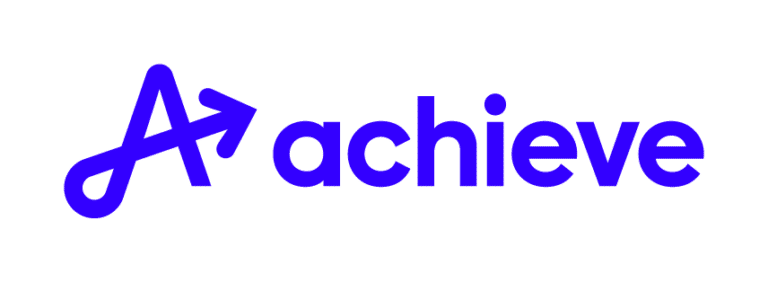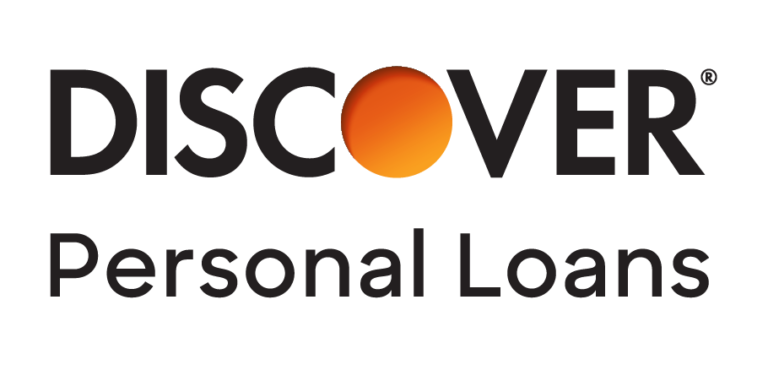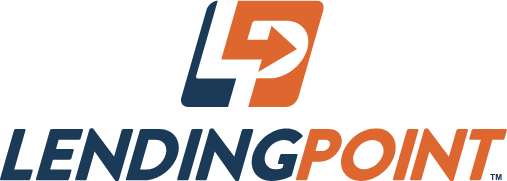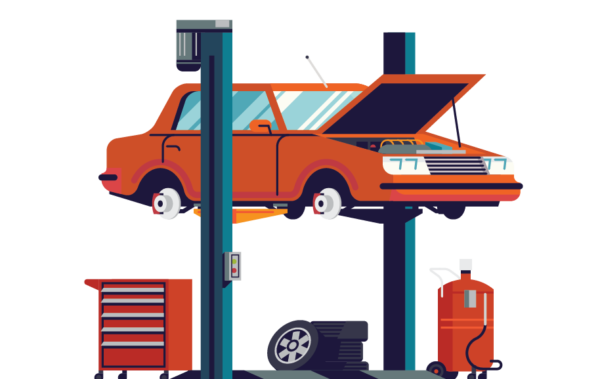Our goal is to give you the tools and confidence you need to improve your finances. Although we receive compensation from our partner lenders, whom we will always identify, all opinions are our own. Credible Operations, Inc. NMLS # 1681276, is referred to here as "Credible."
You probably know the feeling of dread when your car starts to make funny noises — especially if you don’t have a lot of cash on hand. If you’re in this situation, auto repair loans could help you cover the expense of fixing your car.
Depending on the lender, you might be able to get the funds from an auto repair loan as soon as the next business day. Just keep in mind that you’ll generally need good credit and verifiable income to qualify, though some lenders also offer options for poor and fair credit.
Here’s what you should know about auto repair loans and where to find them:
- 14 personal loans for auto repair
- What is an auto repair loan?
- How to apply for an auto repair loan
- Auto repair loan frequently asked questions
14 personal loans for auto repair
Personal loans can be used for almost anything, including auto repairs. Here are Credible’s partner lenders that offer auto repair loans:
| Lender | Fixed rates | Loan amounts | Min. credit score | Time to fund |
|---|---|---|---|---|
 | 7.99% - 29.99% APR | $10,000 to $35,000 | Does not disclose | If approved, funds sent within 24-72 hours† |
|
||||
 | 9.95% - 35.99% APR | $2,000 to $35,000** | 550 | As soon as the next business day (if approved by 4:30 p.m. CT on a weekday) |
|
||||
 | 8.24% - 18.99% APR | $10,000 to $50,000 | 730 | Next business day |
|
||||
 | 6.99% - 35.99% APR | $2,000 to $50,000 | 600 | As soon as 1 to 3 business days after successful verification |
|
||||
 | 7.99% - 24.99% APR | $2,500 to $35,000 | 660 | As soon as the next business day after acceptance |
|
||||
 | 7.04% - 35.99% APR | $1,000 to $40,000 | 660 | Usually takes about 2 days† |
|
||||
 | 7.99% - 35.99% APR | $2,000 to $36,000 | 660 | As soon as the next business day |
|
||||
 | 6.49% - 25.29% APR with autopay | $5,000 to $100,000 | 700 | As soon as the same business day |
|
||||
 | 18.0% - 35.99% APR | $1,500 to $20,000 | 540 | As soon as 1 to 2 business days after approval |
|
||||
 | 8.49% - 17.99% APR | $600 to $50,000 (depending on loan term) | 760 | 2 to 4 business days after verification |
|
||||
 | 8.99% - 35.99% APR | $2,000 to $50,000 | 640 | As soon as one business day |
|
||||
| 8.74% - 35.49% APR10 | $5,000 to $100,000 | Does not disclose | 3 business days | |
|
||||
 | 7.74% - 35.99% APR | $1,000 to $50,000 | 600 | Within a day of clearing necessary verifications |
|
||||
 | 6.6% - 35.99% APR4 | $1,000 to $50,0005 | 620 | As soon as 1 - 3 business days6 |
|
||||
What is an auto repair loan?
An auto repair loan is generally any loan that can be used to cover car repairs. A personal loan, for example, could be a good auto repair loan option — especially since you might be able to get one relatively quickly compared to other types of loans.
Here are a few perks to keep in mind:
- No collateral required: Most personal loans are unsecured, which means you won’t have to worry about losing your assets if you can’t make your payments.
- Funds come in a lump sum: If you’re approved, you’ll receive the funds as a lump sum that you can use for your auto repairs.
- Typically fast funding: The time to fund for a personal loan is usually a week or less — though some lenders might get you your money in as little as one business day.
If you decide to take out a personal loan for auto repairs, be sure to consider as many lenders as possible to find the right loan for you. Credible makes this easy — you can compare your prequalified rates from multiple lenders in two minutes.
How to apply for an auto repair loan
If you’re ready to apply for an auto repair loan, follow these four steps:
- Shop around and compare lenders: It’s a good idea to consider as many lenders as you can to find a loan that fits your needs. Be sure to compare not only interest rates but also repayment terms and any fees charged by the lender.
- Choose the loan option you like most: Once you’ve compared lenders, pick the loan option that works best for you.
- Fill out the application: You’ll need to complete a full application and submit any required documentation, such as tax returns or pay stubs. Be sure to provide accurate information and get any paperwork back to your lender quickly to streamline the process.
- Get your funds: If you’re approved, you’ll need to sign for the loan so the lender can send you your money.
It’s also a good idea to consider how much a loan will cost you over time. Before you borrow, estimate how much you’ll pay for a loan using our personal loan calculator below.
Enter your loan information to calculate how much you could pay
With a $ loan, you will pay $ monthly and a total of $ in interest over the life of your loan. You will pay a total of $ over the life of the loan.
Need a personal loan?
Compare rates without affecting your credit score. 100% free!
Checking rates won’t affect your credit score.
Auto repair loan frequently asked questions
Here are some answers to frequently asked questions about auto repair loans to help you decide if they’re right for you:
Where can you get an auto repair loan?
There are several types of lenders that offer auto repair loans, including banks, credit unions, and online lenders. Some online lenders even offer same-day funding.
Other options include payday loans, pawn shop loans, and car title loans. However, these sorts of loans should only be used as a last resort, as they typically come with astronomical rates and fees. Generally, using a personal loan for auto repairs is a much less expensive option.
Learn More: Where to Get a Personal Loan
What can an auto repair loan cover?
Auto repair loans can be used to pay for almost anything related to car repairs. For example, you might use an auto repair loan to cover new tires, a transmission replacement, or a broken windshield.
Be sure to borrow only what you need to keep your future costs low. While an auto repair loan could technically be used to pay for upgrades (like fancy rims or a new sound system), keep in mind that you’ll have to pay back however much you borrow along with interest.
Is an auto repair loan better than using a credit card?
This depends on your situation. If you can take advantage of a credit card with a 0% APR offer and are able to pay off your balance by the time this period ends, you won’t have to pay any interest. However, if you’re unable to repay the money in time, you could be stuck with hefty interest charges.
The interest rates on personal loans, on the other hand, are often much lower than what you’ll pay with a credit card. For expensive repairs that could take some time to pay off, a personal loan is likely the better option.
Can you get an auto repair loan with bad credit?
While many personal loan lenders require you to have good or excellent credit, there are some that offer bad and fair credit personal loans.
If you can’t qualify on your own, getting a cosigned personal loan could be another option. Not all lenders allow cosigners on personal loans, but some do. Even if you don’t need a cosigner to get approved, having one could get you a lower interest rate than you’d get on your own.
What are some alternatives to auto repair loans?
If an auto repair loan doesn’t seem right for you, here are some alternatives to consider:
- Credit card: If you only need to cover a small expense, a credit card could be a good option, especially if you can use one with a 0% APR introductory offer.
- Home equity loan: With a home equity loan, you can access the equity in your home. You’ll get the funds as a lump sum that you can use as you wish. However, unlike a personal loan, a home equity loan can take weeks to process — which makes it a less viable option if you need to make your auto repairs right away. Also keep in mind that if you can’t make your payments, you could lose your home.
- Home equity line of credit (HELOC): A HELOC is another way to tap into your home’s equity. Unlike a home equity loan, a HELOC is a type of revolving credit — you can repeatedly draw on and pay off your credit line, similar to a credit card. Just remember that your home could be at risk if you can’t keep up with your payments.
Keep Reading: $5,000 Loan






